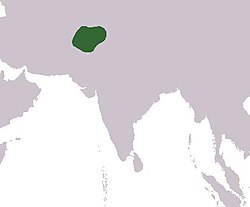Gandhara Kingdom
| Gandhara | ||||||||
|
||||||||
|
Approximate boundaries of the Gandharan Empire, in northernwestern Pakistan, and northeast Afghanistan.
|
||||||||
| Capital | Not specified | |||||||
| Government | Monarchy | |||||||
| Historical era | Ancient Era | |||||||
| • | Established | 1500 BCE | ||||||
| • | Disestablished | 535 BCE | ||||||
|
||||||||
| Today part of |
|
|||||||
Gandhāra (Sanskrit: गन्धार,Pashto: ګندارا, Urdu: گندھارا, Avestan: Vaēkərəta, ) was an ancient kingdom of Purushpura extending to the Swat valley, and potohar plateau regions of Pakistan as well as the Jalalabad district of northeastern Afghanistan, is a kingdom in the epic Mahabharata. The epic Ramayana also mentions it as a western kingdom. Gandhara prince Shakuni was the root of all the conspiracies of Duryodhana against the Pandavas, which finally resulted in the Kurukshetra War. Shakuni's sister was the wife of the Kuru king Dhritarashtra and was known as Gandhari. Gandhara was in modern Pakistan. Puskalavati, Takshasila (Taxila) and Purushapura (Peshawar) were cities in this Gandhara kingdom. Takshasila was founded by Raghava Rama's brother Bharata. Bharata's descendants ruled this kingdom afterwards. During epic period it was ruled by Shakuni's father Suvala, Shakuni and Shakuni's son. Arjuna defeated Shakuni's son during his post-war military campaign for Yudhishthira's Aswamedha Yagna.
...
Wikipedia

